Today, Apple launched a new processor, the Apple M2 Ultra. This new CPU will power machines like the new Mac Studio as well as the new Mac Pro. This is something that we expected continuing the Apple M1 Ultra and Apple M2 but it feels a bit mixed. For those who need updated Mac Pro machines languishing with Cascade Lake (security-fixed 2017-era Skylake) processors, this is a huge upgrade. Still, Apple is taking a very different approach to the high end than NVIDIA and AMD.
Apple M2 Ultra
The M2 Ultra is a new chip that combines two Apple M2 Max chips into a single larger chip. Apple only claims an up to 20% CPU, 30% GPU, and 40% neural engine performance boost. Apple is typically very liberal with its performance figures, so take that into account.
One of the big features, however, is that it now can support 192GB of unified memory, or around 50% more than M1 Ultra.
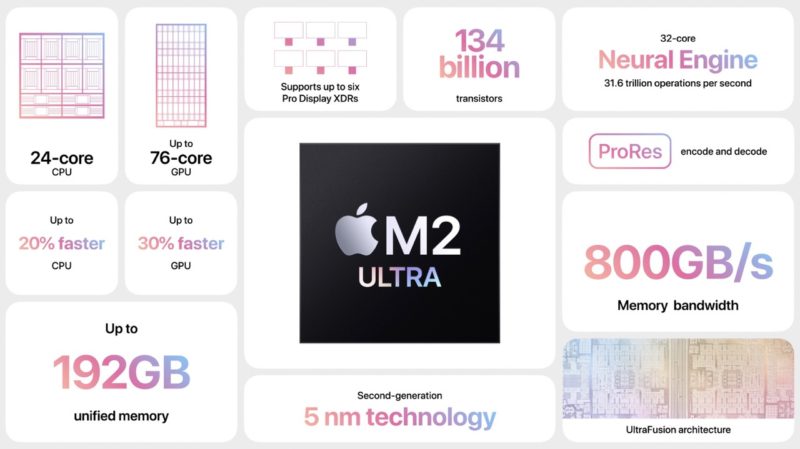
Apple’s chips rely heavily on acceleration, and the h264, h265, and ProRes acceleration are very good. That hardware acceleration is a big part of what makes Apple’s chips excellent, especially with ProRes. What Apple is missing is AV1 hardware encode/ decode. Given how fast AV1 is being adopted, that feels like a big miss in high-end mid-2023 products. It is a byproduct of doing its own silicon and missing the feature.
What is also really interesting here is that Apple’s strategy of launching lower-end parts first is different from AMD and NVIDIA. Buying Apple’s top-of-the-line part will be disappointing if you need AV1 encode/ decode. Our sense is that this will be a M3 feature, so in a few quarters when we see a sub-$1000 M3 Mac Mini it may be a more efficient AV1 editor than a $10,000 Mac Pro.
Apple Mac Pro M2 Ultra Edition
Apple claims that its Mac Pro M2 Ultra edition can be up to 3x faster than its Intel Mac Pro which essentially ran a 2017-era chip. That is not great given we are seeing that same speedup on x86 chips over the same period. At the same time, there is a lot good about the machine. Here is the quick summary:
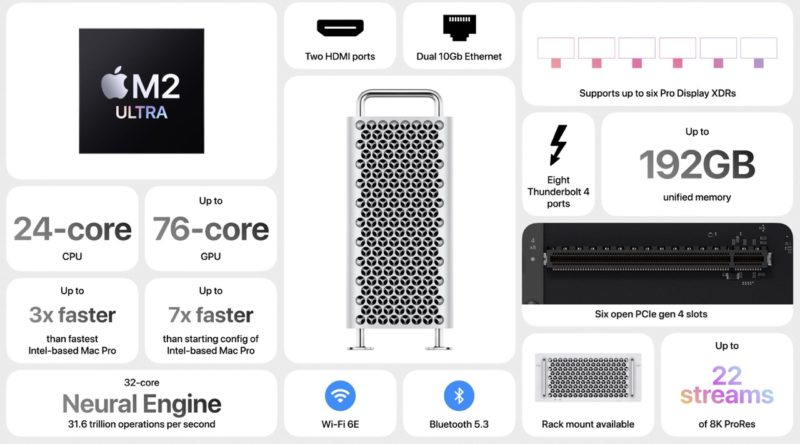
Expansion is one of the biggest features of the M2 Ultra, and perhaps the one that folks miss most from the Mac Studio M2. Here we get a PCIe Gen3 x4 card for Apple I/O. We then get four PCIe Gen4 x8 and two PCIe Gen4 x16 slots. That means 64x PCIe Gen4 slots are available with the caveat being that the GPU is built into the M2 Ultra SoC so that does not need dedicated PCIe slots.
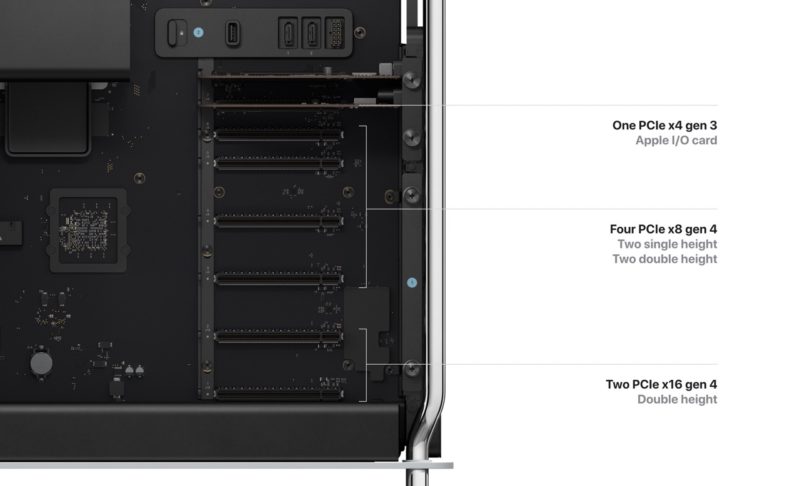
If you are wondering what Apple is focusing on to populate these slots it seems as though the company is focused on storage, networking, audio, and AV I/O. Notably absent are AMD GPUs, the mainstay of previous generation Mac Pro systems.
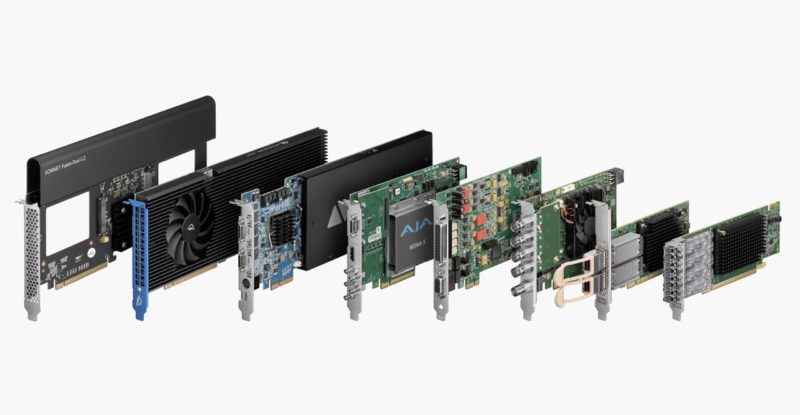
The new Apple Mac Pro M2 Ultra gets eight Thunderbolt 4 ports. Six are on the back of the system and two are on the top. That is awesome.
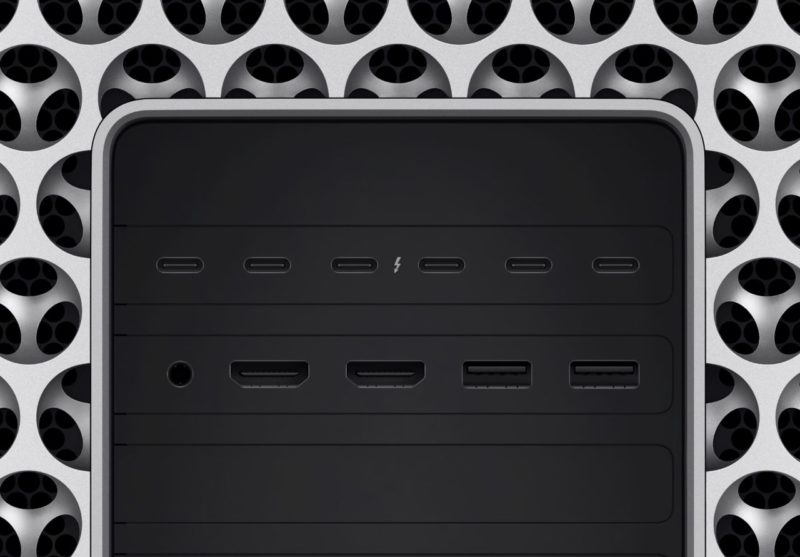
Another huge change is pricing. The Mac Pro M2 Ultra starts at $6999 for the tower configuration. When we went to the top 24 core CPU/ 76 core GPU, 192GB memory, 8TB SSD configuration, we got to only $12299. That may seem like a lot, but it is nowhere near the $20K+ prices top-bin last-generation systems sold for. Or put another way, Intel was selling a 28-core Xeon W-3275 for $4894. By the time memory, a GPU, and any acceleration cards were added, it ended up being an expensive system, albeit one that could scale to a large amount of ECC RDIMM memory. With the new Mac Pro, prices may seem expensive but are reasonable when professionals are often buying a NVIDIA RTX 6000 Ada for video editing that the Apple silicon parts excel at (save for AV1.)
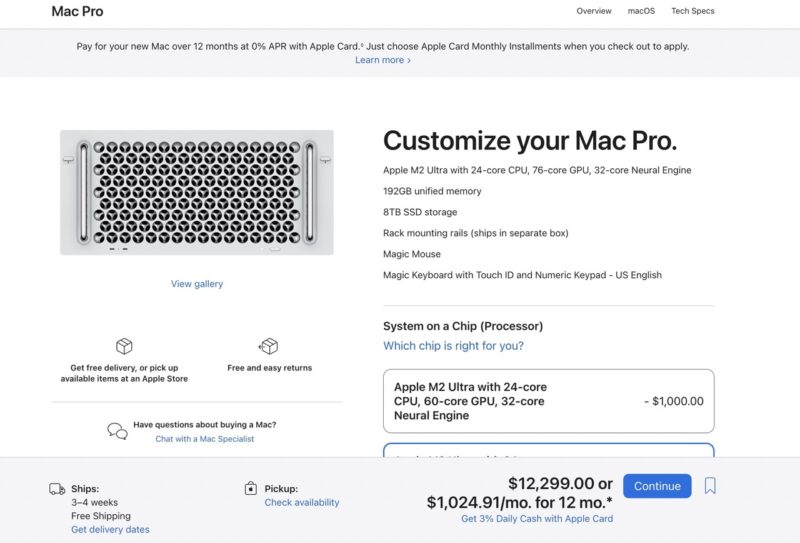
The tower can hit $11,799 without the $400 wheels.
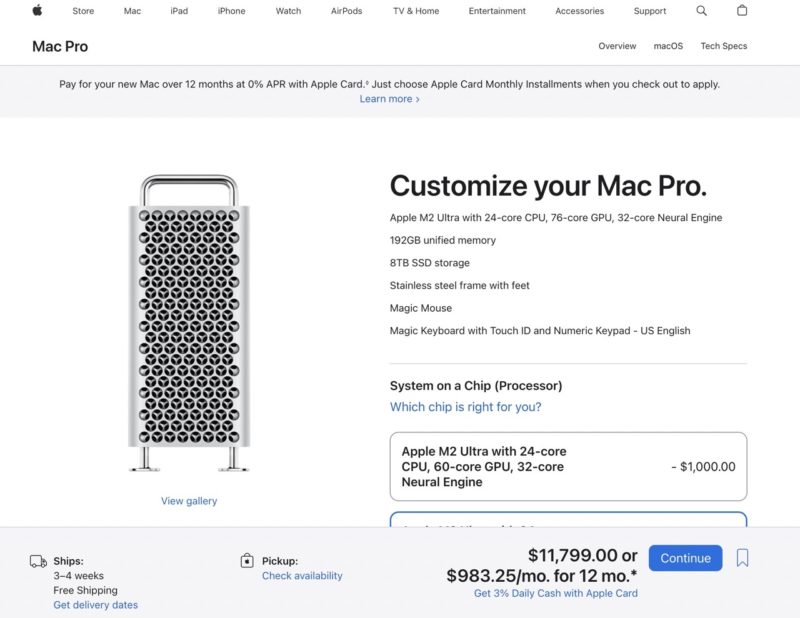
Overall, we would have liked to have seen a M3 part with more memory, AV1, PCIe Gen5, and so forth, but for a lot of professional users buying systems today, this is going to be exactly what they want. Pricing is high, but now that we have the YouTube side and have to deal with simple 4K video production, I completely understand why folks would not blink at this pricing if it was a primary work tool.
Apple Mac Studio M2 Max and M2 Ultra
For those who do not need that PCIe expansion, then the Apple Mac Pro Studio is probably the better option. The new Mac Studio comes with either the M2 Max or M2 Ultra parts. One can get the same CPU, GPU, and memory M2 Ultra that is in the Mac Pro, for less in the Mac Studio.
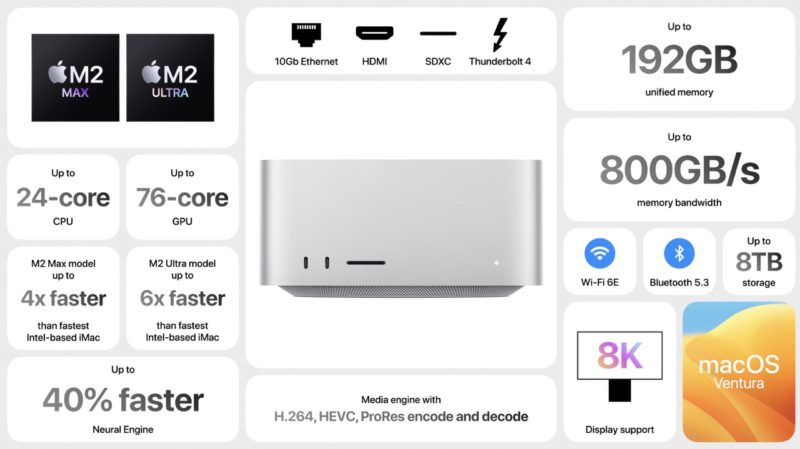
The M2 Max starts at $1999 and can get to $5399. The M2 Ultra version starts at $3999 and can scale to $8799.
That is quite interesting since it means the PCIe Gen4 slots and additional I/O costs around $3000 on the Mac Pro. On the other hand, if you need to put a specific card in the Mac Pro, then there is not really another option.
Final Words
I can still remember the days of looking at the Apple Mac Pro and thinking “This pricing is silly.” In some ways, I still think it is. On the other hand, having used a silly-priced Apple MacBook Pro M1 Max since it was first announced, I get it. Apple has a package highly targeted toward creative professionals. The new Mac Pro pricing is much more reasonable than the previous-gen one, especially given the price reduction in the face of inflation.
What I am most excited about with this release though, is the Mac Studio M1 pricing. Apple tends to sell new units of older generation M1 iPad, Mac Mini, and MacBook models at lower prices with the M2 variants out. The M1-powered Mac Studio is now on my deal alert watchlist.

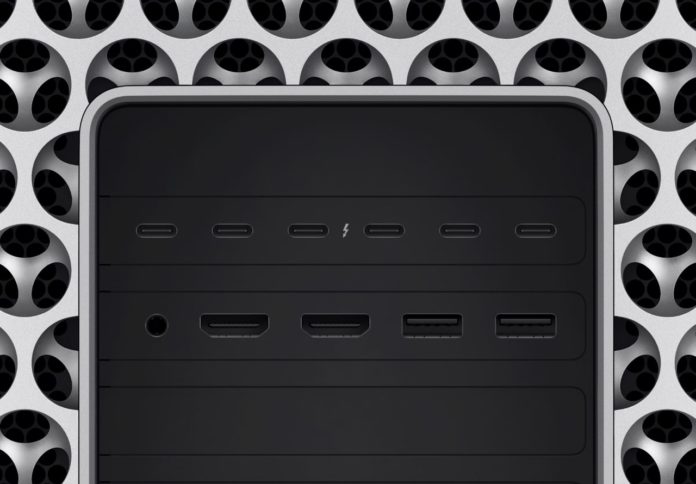



“On the other hand, if you need to put a specific card in the Mac Pro, then there is not really another option.”
Are we ignoring the widely available ~$300 Thunderbolt PCIe expansion chassis options for some reason?
Thunderbolt 3/4 chassis limits bandwidth to 4 lanes of PCie 3.0 where as the Mac Pro has 16 lane PCie 4.0 slots. So if the card you need requires host bandwidth, then Thunberbolt isn’t much of an option.
As already commented, I only see one use cases for the Mac Pro vs Mac Studio:
– Those who need expansion cards with more than PCIe 3.0 x4 throughput.
Other typical Mac Pro advantages are no longer present:
– no upgradable CPU (though Intel’s obsolescence strategy meant you could never count on upgrading to a later generation anyway)
– no upgradable RAM
– in practice no upgradable SSD, though there is some space for additional internal storage via PCIe
Not that most people need that, but I’m still sad to see the trend towards less and less upgradability, mainly for the sake of the environment, but also for home tinkerers and hobbyists like me who like to use older enterprise gear.
Also note that there is no longer possible to get ANY Mac with more than 192 GB RAM. This means high-end visualizations/3D/VR production, big data analysis etc. is dead on the Mac as a platform. Perhaps most people have moved towards distributed computing on clusters for this anyway, but I still can’t help feel it’s a pity that socketed DIMMs are no longer available.
This would be awesome if it supported CXL memory expansion.
I can remember needing the Mac Pro power years ago but with the move to Apple Silicon times have changed. I’ve worked with a few design firms in the last year and Pro wasn’t even discussed, Studio was quite a bit but after discussing the customer needs most actually went to mini’s and have been happy. Mini’s with M2 Pro’s, 32GB ram, and 10GB ethernet for $1,799 before discounts which is sizable cost savings vs Mac Pros of yesteryear.
I’m curious how pcie compatibility is going to be. How many existing PCIe cards will be compatible with this?
AV1 PCie cards?
I’ve found that the SSDs in the Mac mini (prior generation) that I own underperform. This is a 2TB SSD. It slows to a crawl once the cache is saturated ( and that happens faster as a compared to a high end drive ).